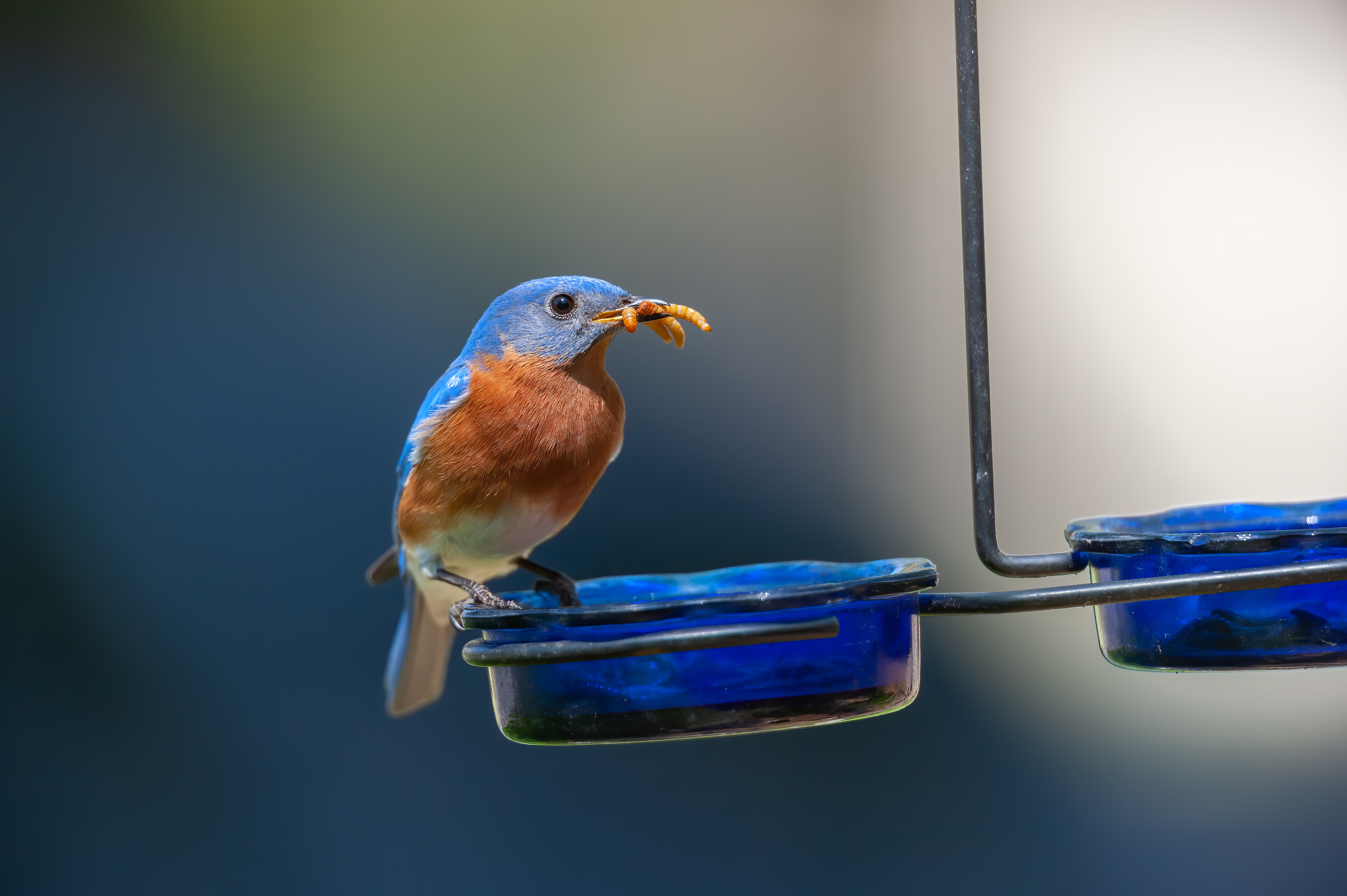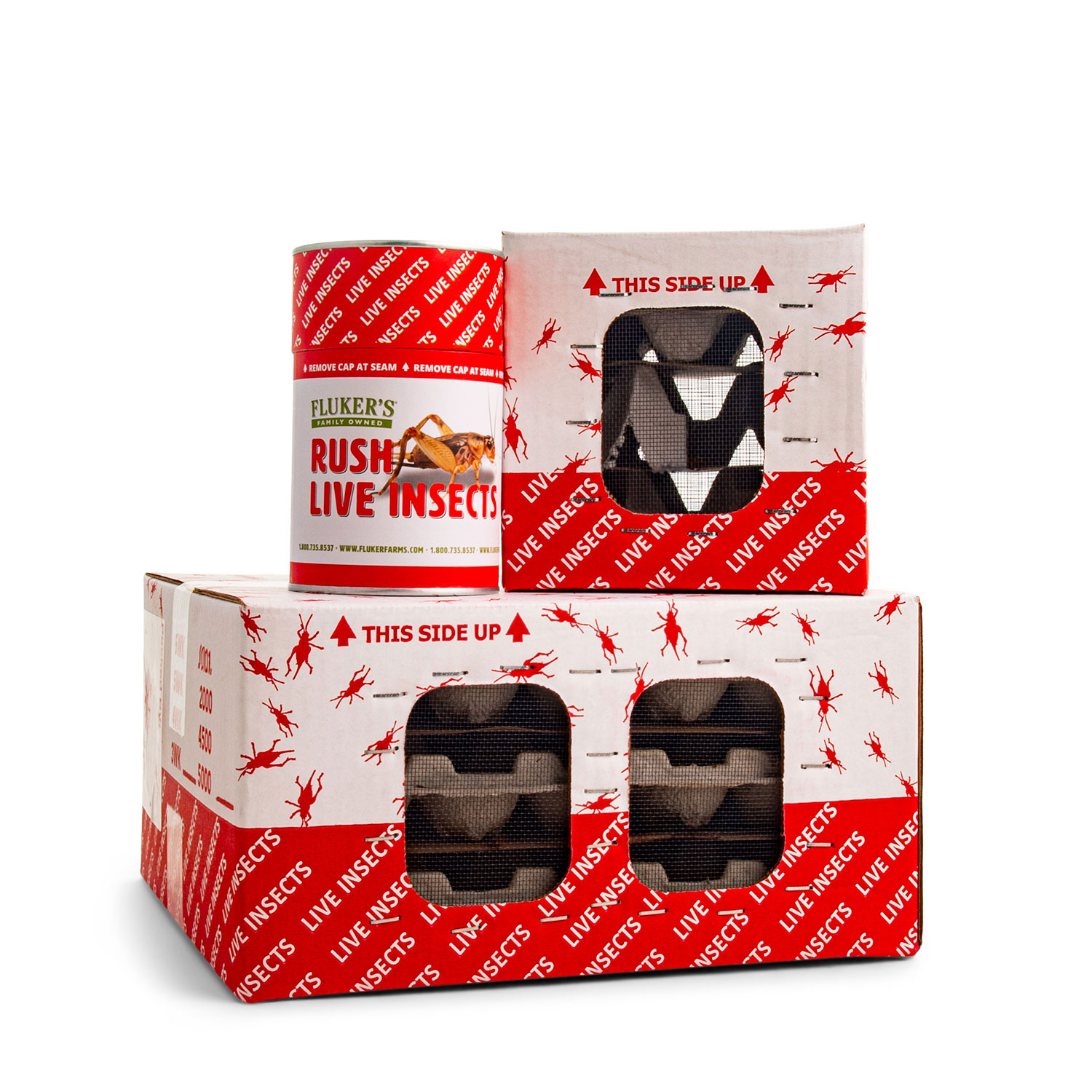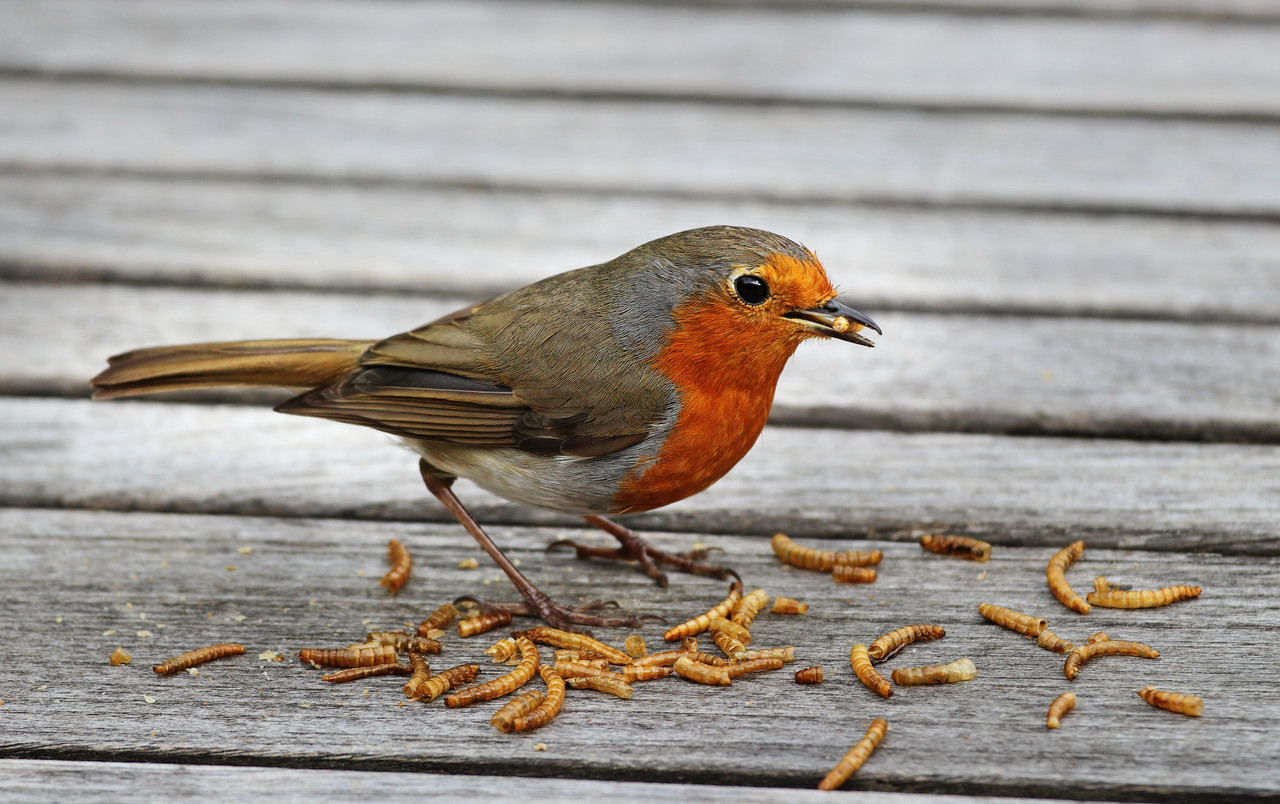Facts and Information about Feeding Mealworms to Birds
Posted by The Fluker's Team on Jun 18th 2024
How to Get the Most out of Your Mealworms

Bluebirds can be a sight to watch. People like them because they have pretty colors and sing in a distinct way. You can attract them to your garden by giving them mealworms to eat.
Mealworms are a reliable source of protein for most birds, making them a nutritious and tasty treat. To make sure bluebirds (and others) enjoy eating these critters, it is important to offer them in a safe and attractive way. One way to do this is by offering them in a shallow dish or tray that is easy for the birds to access.
To bring bluebirds to your garden, sprinkle a mixture of mealworms and sunflower seeds or bird food on the ground or a platform feeder. This will attract the bluebirds with the tasty treat. They will be drawn to the area where the food is placed. Make sure to regularly replenish the food to keep the bluebirds coming back.
It is also important to consider the quality of the mealworms you are offering. Make sure to purchase mealworms from a reputable source to ensure they are fresh and free from any harmful chemicals.
These insects are great for our environment. They have voracious eating habits that help decompose and clean up unwanted organic matter. They are also popular feeder insects for various animals, thanks to their high protein and fat levels. These animals include lizards, chickens, fish, and many others.
“For animal owners, they’re popular because they are very easy to raise in captivity compared to a lot of other insects that (Fluker’s) has,” said Kim Boykin, a Louisiana State University researcher. “There’s little hassle to them, and they are not smelly, like crickets, which is a popular reason for buying them.
“For the animals, they move around the cage fairly well and draw interest,” she added. “The reptiles are activated by the motion of them, and they are generally pretty easy to eat.”
Boykin warned that because of the mealworm’s higher fat content, there should be a variation in the animal’s diet. However, they do offer nutrients that reptiles, birds, and other animals need. They have water-soluble vitamins and minerals, but they lack calcium. Adding a calcium supplement when feeding mealworms is important.
For over 65 years, Fluker's has been a top supplier of high-quality mealworms. They offer live mealworms in a range of quantities, from 250 to 10,000 insects per order.

(Your order size) should depend on the size of your animal,” said Casey Barthe, Fluker’s reptile specialist. A small gecko eats only one or two insects a day. In contrast, a larger animal like a bearded dragon or chameleon can eat up to 30 or 50 insects daily.
Additionally, you should determine the quantity you order based on your storage space. You can easily maintain them for extended periods if you store them properly. Taking care of your feeder insects will keep them healthy and in turn will lead to a healthier pet.
So next time you see a bluebird in your yard, consider offering them some mealworms to make their visit even more enjoyable. Attract more bluebirds to your garden by offering mealworms in a safe and appealing manner. Enjoy watching these beautiful birds up close.
FAQ
Q. Which birds eat mealworms?
A. If you do not have the perfect habitat for bluebirds, do not worry! Many other birds will appreciate dried or live mealworms, including some of our favorite feeder birds.
Chickadees, nuthatches, and titmice often visit bird feeders for these delicious snacks. Other types of birds that like these treats are wrens, orioles, robins, woodpeckers, and some warblers like the Pine Warbler.
Q. What is the method to feed birds with mealworms?
A. Place mealworms in a bird feeder that birds can easily see and reach. Regular feeder birds will consume mealworms directly at their usual feeding spot. For birds that do not frequently visit your feeder, position the feeder close to where you have observed them eating or resting.
Mealworms can crawl, so it is best to put them in a feeder so they cannot exit. Use a cup-style feeder with smooth sides that are at least 1 inch tall. You can also use a tray or platform feeder, but ensure it has sides to prevent the mealworms from crawling out.
Q. How will birds react when I feed them mealworms?
A. Keep an eye out for adult birds carrying a beak full of mealworms back to their nest or birdhouse to nourish their chicks. After the young birds leave the nest, watch as the adult birds feed mealworms to their fledglings. You can see the young birds crying and fluttering their wings in a tree.
See the young birds go to the mealworm feeder by themselves. Watch as they feed themselves for the first few times in their lives.
Bluebirds will become accustomed to you providing mealworms and will patiently linger close by as you stock up the feeder. They will swoop in as soon as you have left.
Q. How do you store mealworms?
A. When you order mealworms from Fluker's, they will come in either a box or mailing tube. The type of packaging depends on the quantity you order.
When you get the insects, put them in a plastic container with holes in it. Cover them with a two-inch layer of wheat middling or oatmeal for bedding and food. Then transfer the container to a refrigerator set at 45 to 50 degrees Fahrenheit. The mealworms will enter a hibernated state but will continue to thrive in the environment.
When storing insects for a long time, make sure to give them water every two weeks. Take them out of the refrigerator and let them warm up for an hour. Then, put slices of potatoes or carrots on top of their bedding for them to eat. After a couple of hours, discard any leftover chunks and return the container back to the refrigerator.

